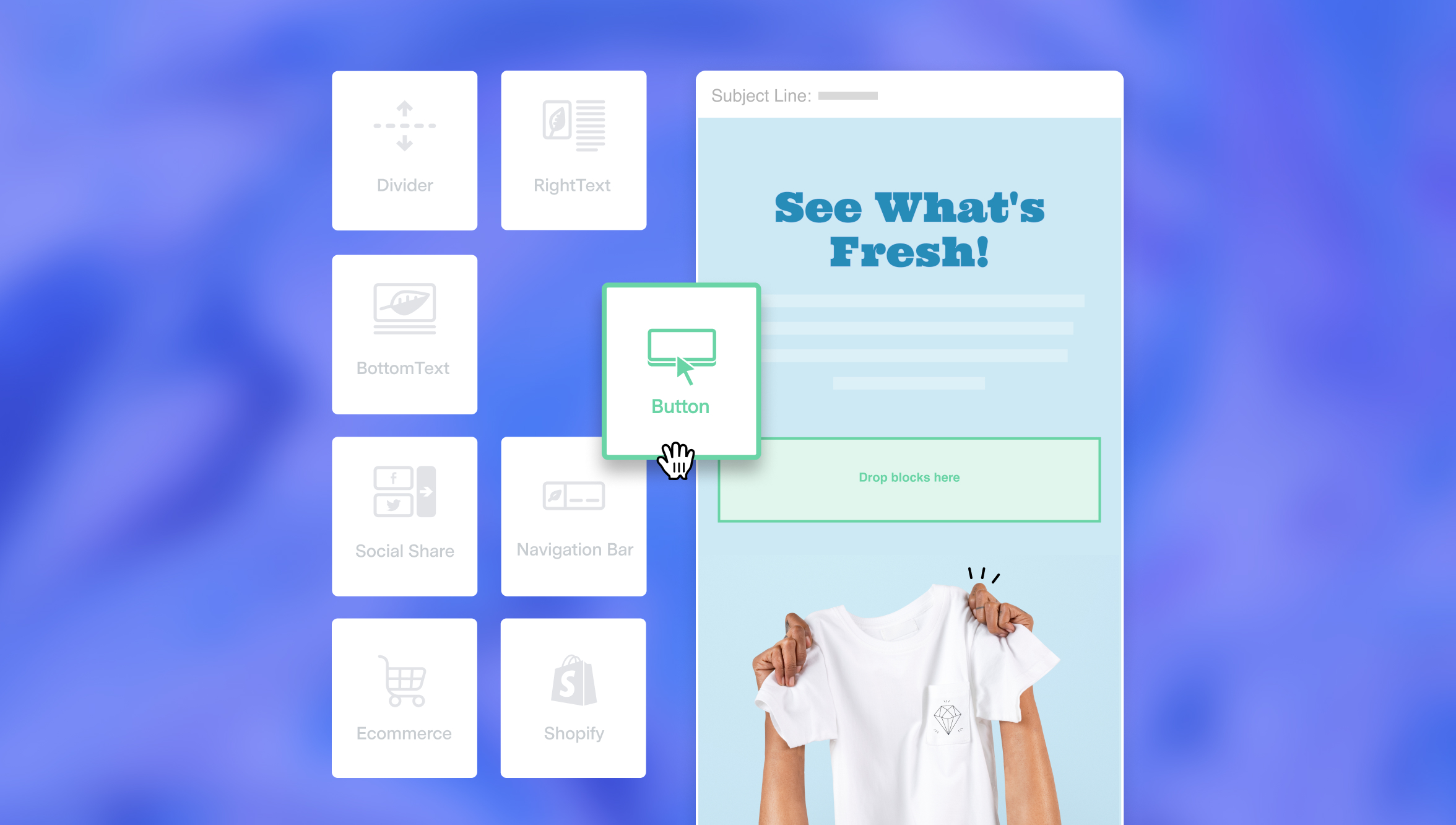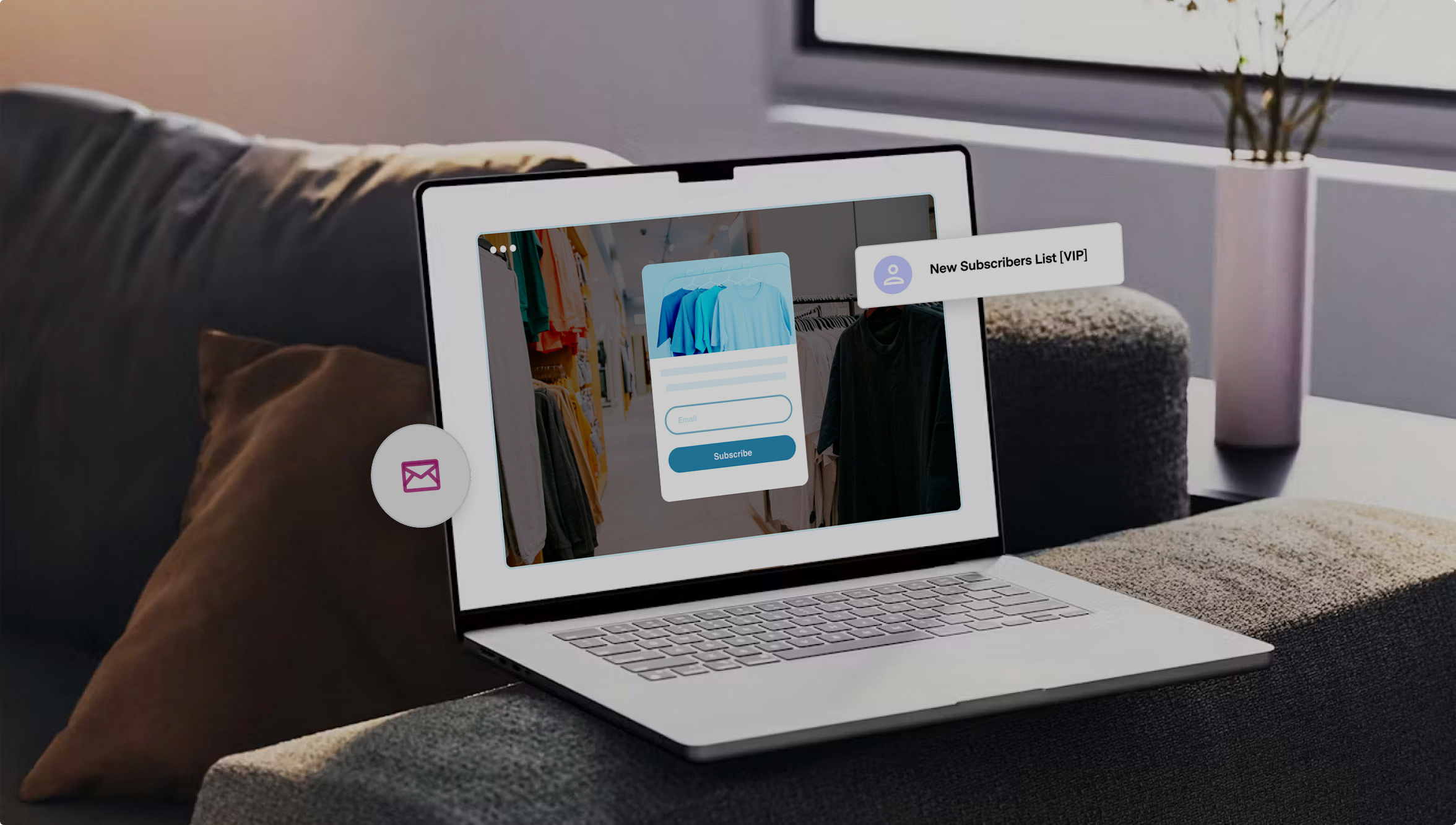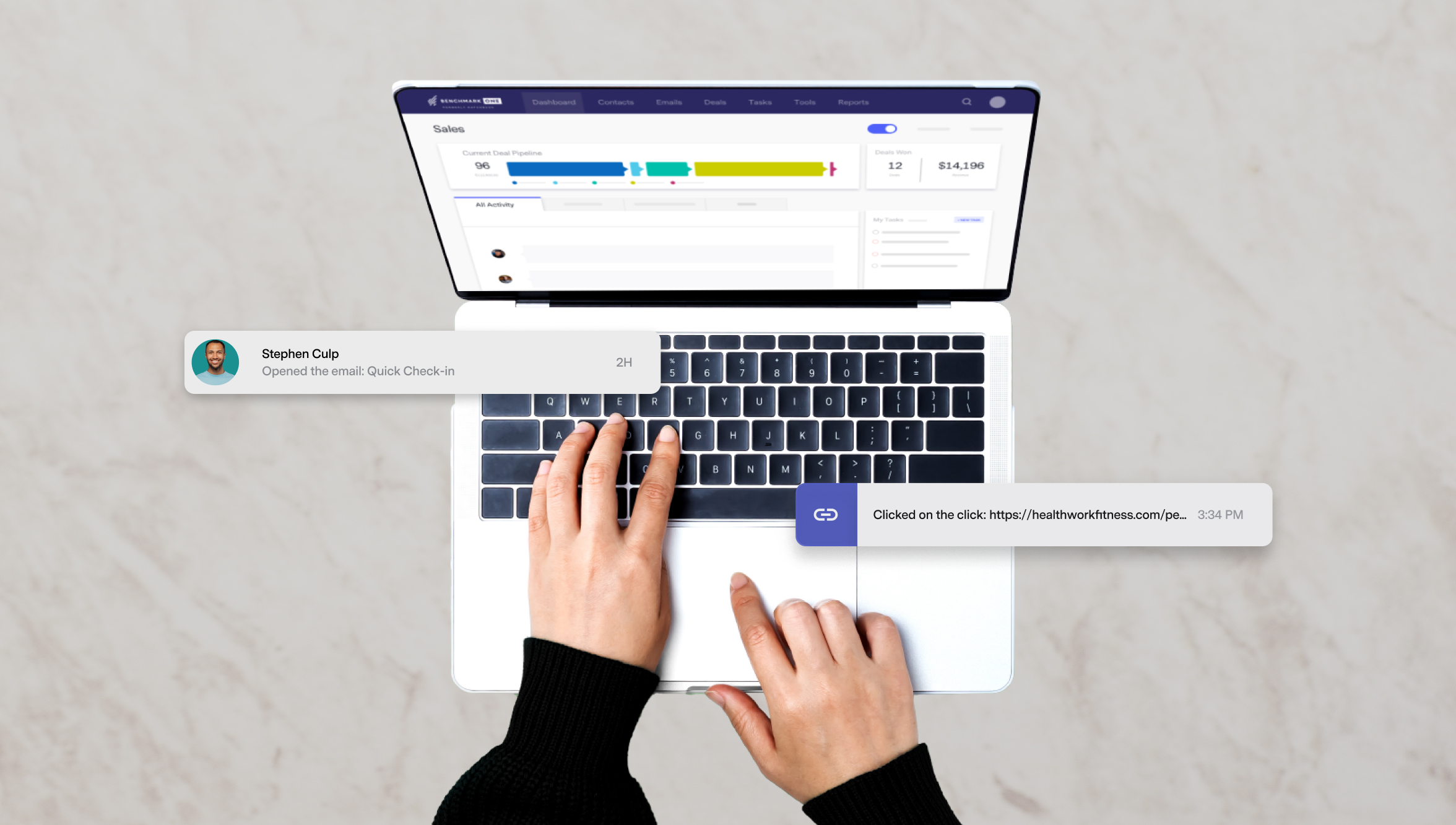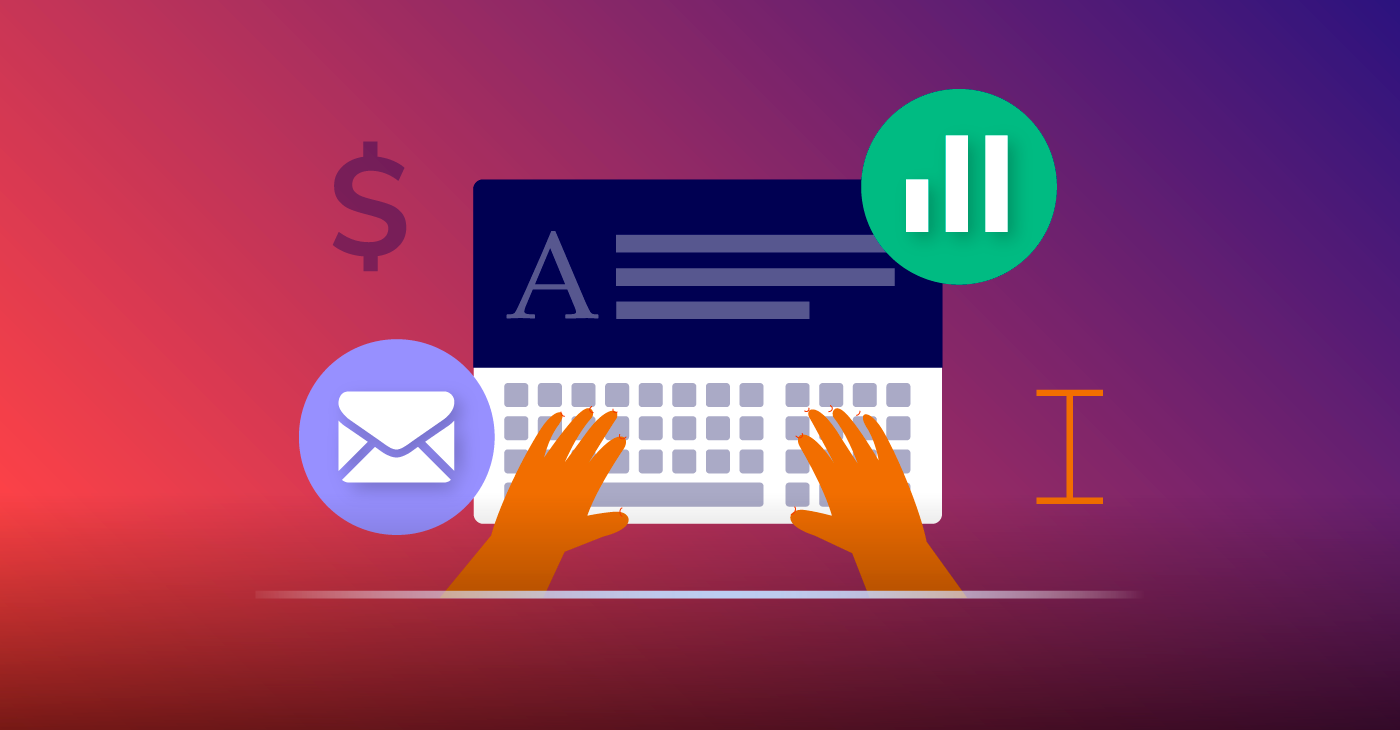
The beauty of personalization is that it shows your leads that you know who they are. It shows them that you understand their issues, needs, and how your product or service fits within that equation.
What’s even better is that it doesn’t require a ton of work on your end. You don’t need to individually research each prospect in your database to determine what their knowledge level is and what they need to make their lives easier. All you need to do is employ the right marketing automation tool.
You need a tool that will provide you with the right capabilities without all the unnecessary bells and whistles that you won’t end up using. You need a small business CRM that allows you to track your prospects’ behavior so you can determine various factors, like:
- Where they are in the buyer’s journey
- What content they engage with the most
- What actions they’re taking on your website
- Which of your emails they’re opening and clicking on
- What CTAs are driving them to action
It also doesn’t hurt to have a tool with tagging capabilities, so you can take that information, label, and segment your leads based on whatever organizational approach works for you. Tagging is a simple way to filter your leads and customers into lists so you can target them with content that will be most relevant to them.
Luckily, with BenchmarkONE, you can create tags for your contacts using various different approaches. Let’s dive into how you can use tagging to segment your contacts for better, more effective, personalized outreach.
Different Ways to Use Tagging to Segment Contacts
By Behavior
Knowing where your prospects visited on your site gives you information on what they are looking for. This can help you determine what sort of content you should send them.
In BenchmarkONE, you can set it up so that if a prospect visits a specific page, you can automatically tag them based on applicable information. So, for example, if you run a dance studio and someone clicks on your ballet training courses, you can set it up so an automatic “ballet” tag is added to their contact profile. This tells you that they’re specifically interested in information regarding ballet, so you’ll know to send them any related content, discounts on your ballet classes, or ballet course schedules.
You can even take it one step further by setting up a rule to automatically send an email about ballet courses or offers to any prospect who clicks on a ballet-related resource on your website.
The same capabilities can be used based on email and purchase activity. You can set up tags so that if your prospects click on a particular piece of content from one of your emails, or if they purchase something on your site, they’ll be automatically sent similar content or information on related products. It’s an easy way to provide them with exactly what they need without them having to dig around on your site to find it.
By How They Converted
The process of converting a site visitor to a lead is an important one. The more leads you have, the bigger your selling pool is. And the bigger your selling pool, the higher your probability of converting more leads to customers is.
Where am I getting with this? Well, by identifying how your visitors are converting, you tap into the lead sources that are most effective. You can determine if certain channels are generating more conversions over others, and it can help you identify where you should focus more of your efforts. It can also help you more easily identify what content these lead sources crave.
Here are some tags you could use for this tactic:
- Opt-in – Leads who signed up for your email campaigns.
- Form – Leads who downloaded a piece of gated content.
- Purchases – For leads that make a purchase. I recommend getting more specific by adding a dash and the name of the particular product they purchased.
- Sales – Leads that were sourced by your sales team.
- Marketing – Leads that were converted from inbound marketing tactics.
- Social Media – If you’re running any social campaigns, you can tag people that convert from them.
By Marketing Personas
It doesn’t hurt to go the obvious route and create tags based on your buyer personas. After all, you spend a lot of time putting together your marketing plan, which includes thoroughly outlining your ideal buyers, so you might as well put that information to use as much as possible.
Think about how you’re segmenting your personas and what sort of characteristics you’re using to define them. Things like:
- Region
- Industry
- Where they are in the buyer’s journey
- Awareness
- Consideration
- Decision
- Job title
- Gender
- Age
Setting up tags based on marketing persona characteristics is also a good way to determine if you’re accurate about who your ideal buyer is. If you’re finding that certain tags aren’t being used, it could tell you that you are targeting a demographic that doesn’t actually align with your product or service.
Make sure you consult with your marketing team to determine any characteristics you should include or omit. It also doesn’t hurt to consult with your customer support team, as they know your existing customers best and can help you uncover any areas you’re overlooking.
By Business Type
In the previous point, we mentioned using tags to segment your prospects based on industry. A related yet broader approach could be to use tags based on the type of business they’re affiliated with.
Perhaps you’re a marketing company, or you offer a service that is used by a wide variety of different companies. If so, this approach makes sense for you, as it will allow you to determine which prospects are tied to a small business, an agency, or other firms. Here are some examples:
- Small business
- Agency
- SaaS
- Design agency
- Big Data
- Non-Profit
This may be an especially helpful approach if you’re just starting out. Over time, you may want to get more specific by tying in descriptors to give the tags more context.
Tips For Effective Tagging
Automate, Automate, Automate!
Instead of manually tagging all your leads, set up automatic tagging so you don’t even have to think about it. That way, if a lead performs a certain action, they’ll automatically be tagged with the appropriate label. It frees up time so you can focus on your other array of necessary tasks. You can also score your tags so that if a certain action is done more than once, they receive a higher score, which can help you determine who your more qualified leads are.
Don’t Do It On The Fly.
While you may think of new tags to create in the moment, it’s best to plan your tags in advance so you can create them in your platform ahead of time. This will ensure nothing falls through the cracks and that when it comes time to tag a new lead, you can do so quickly and easily by grabbing a tag that already exists.
Routinely Audit.
Make sure you check in routinely to evaluate your tags. As your business grows, some tags will become non-applicable and make room for new tags that are more accurate for your needs and customer behavior. You can always archive old tags instead of deleting them, in case you aren’t sure if you should totally remove them or not.
I hope this blog post has made you a solid believer in the power of tagging and what it can do for your list segmentation. Remember, personalization is extremely important for effective lead nurture, and tagging your leads appropriately is the best way to go about it.






